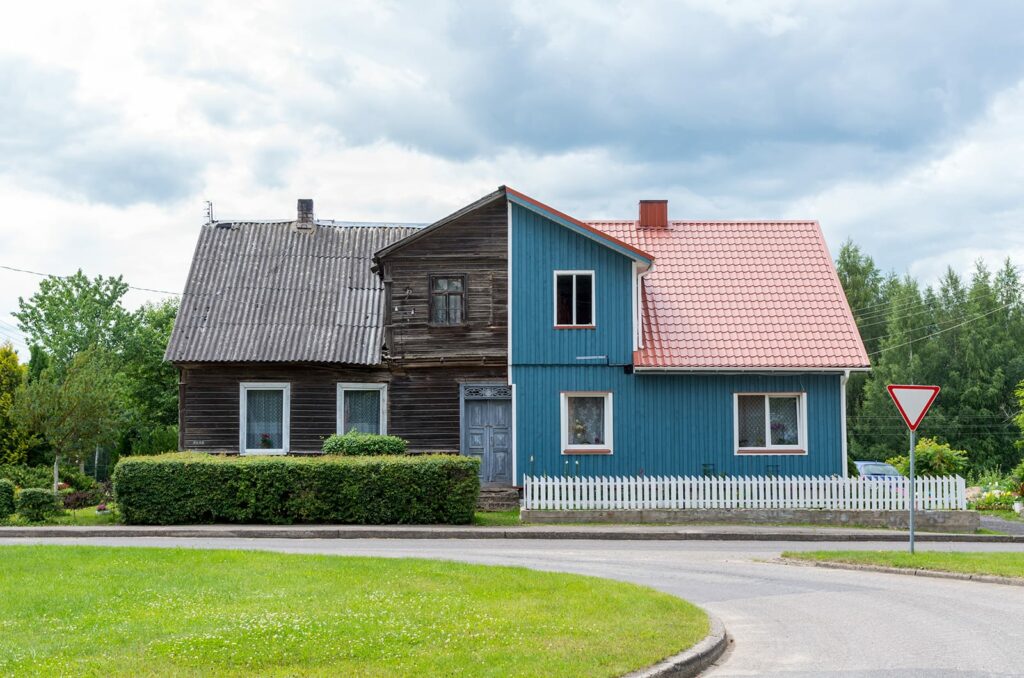
Contents
Many differences between older homes and new constructions go well beyond just curb appeal. Truly, the major differences all come on the inside, like floor plans, plumbing, or electrical wiring. Looking deeper inside, though, can show even more differences. Older homes are much more likely to have pests than newer homes. So what should you do with all those bugs in an older home?
One reason that you will find more common house insects, if it is older, has to do with its construction. First off, older home are just that: older. Decades ago, they built houses using different standards, and those different standards included materials, locations, and construction components. Older homes are also attached to older municipal infrastructure, and they are surrounded by other old homes. This setting can affect both how and what pests can infiltrate into those houses.
An obvious reason that pests can enter an older home is that they have an entrance. Holes or other openings will allow insects or rodents to enter the structure, and a mouse can squeeze through a gap as small as a dime. Cracks also can open up a pathway for pests.
You will be glad to know that you can fix these problems yourself. Inspect that most likely spots first where you think these pests can get into your house. These spots include around utilities and pipes or cracks in or around the foundation. You can use concrete to patch up a crack or so silicone or caulk to close off other areas. Try to avoid using expandable foam, as it is susceptible to the weather, and mice can chew right through it.
Doors and windows on an older home differ vastly from those installed in modern homes. If you can feel a draft of the year, then you should know that’s a spot that pests can fit inside. Using a door sweep will create a barrier to help prevent pests from entering. Also, a door that does not fit properly is an invitation for insects.
Windows need to be properly fitted, too. There may already be some caulking around the window, but the caulk can degrade. Check around the window and the framing, and seal off any potential openings.
All living creatures require water, so if there are any leaks around your house, check for signs of rodents or insects. A gutter that is clogged or backed up is one example of trouble. When water is not properly directed away from the house, it is more likely to find its way inside your house. That water can lead to mold or fungi, which some insects will feed on. Moisture can also compromise the integrity of construction material, making it easier to get through.
Clean out your home’s gutters regularly, as a clean gutter will allow the best path for water to flow away from your home. Not only will it decrease the chance of pests, but it will also save your home from potential high-cost water damage repairs.
Homeowners of an older house are likely to want an addition, and that construction phase can affect how pests can get inside. If you added a patio or other room on without having a termite treatment done, then that ground could be compromised. Improper plumbing can make an entryway for rodents. Poor roofing could leave gaps for squirrels or bats.
Many of the things you would look out for when buying a new home apply to your old home. If you live in an older home and think there might be something more in your home besides charm, call Van Den Berge Pest Control at 616-392-7367.Trust the locally owned, widely renowned experts at Van Den Berge Pest Control for all of your pest needs.
Recent Posts
5 Tips for Evaluating Termite Treatment Costs
When it comes to evaluating termite treatment costs, you need a strategic approach. Understanding the
Comparing Termite Treatment Costs: A How-To Guide
When you’re faced with a termite infestation, understanding treatment costs is vital for effective management.
Understanding Exterminator Costs for Mosquito Control
Imagine you own a large backyard and decide to hire a mosquito exterminator. You might
